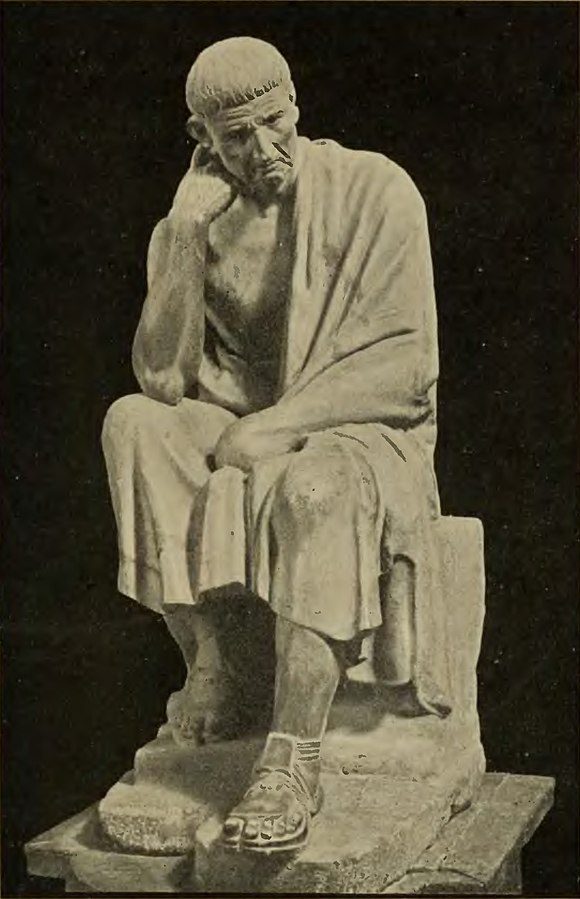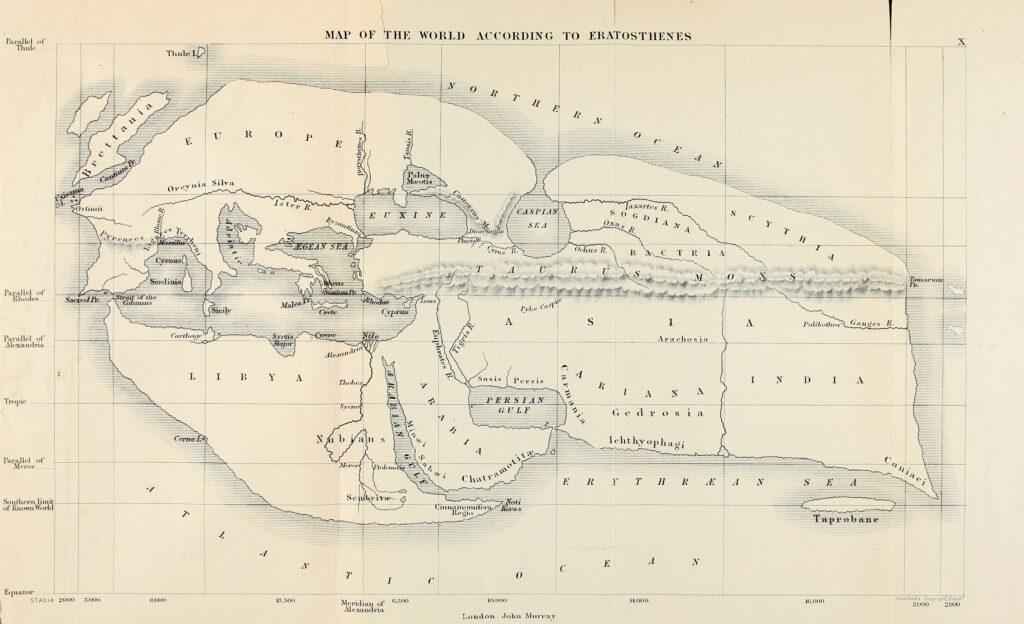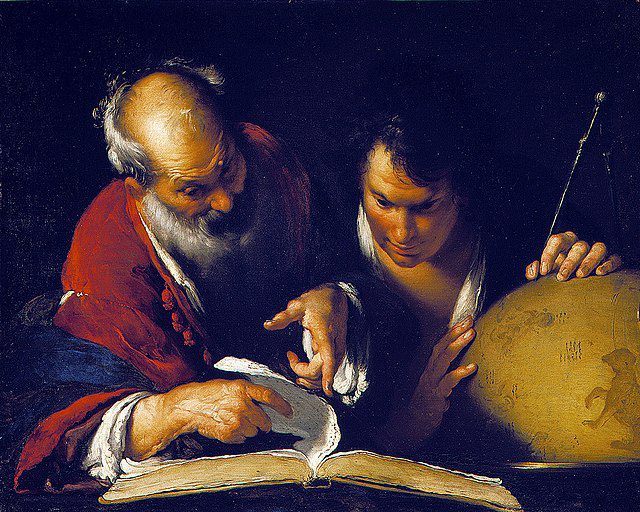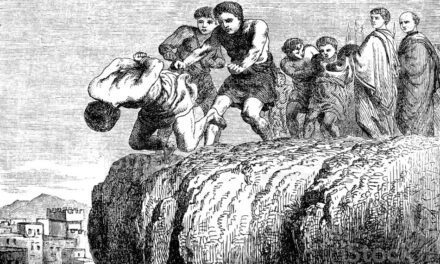KNOWLEDGE OF THE ANCIENTS: EARLY MEASUREMENTS OF THE EARTH
Reading time: 7 minutes
The desire to obtain knowledge of the world around us is a classic human trait. Investigations into the size, shape, and movement of the planet (and other planets) are constant throughout history, giving rise to several theories about the wider world. Some of these theories are made even more remarkable by their incredible accuracy, without all the tools and technologies we have to confirm them today.
There were several attempts to measure the size of the earth, some more accurate than others, over 2000 years ago. The well-documented attempts largely came out of Greece as part of the Ancient Greek ‘Golden Age’. Of all the attempts of the period, none were as accurate and successful as Eratosthenes.
By Madison Moulton
Early Greek Measurements of the Earth
Plato

Plato (c. 428 BCE – c. 348 BCE) is among the most famous Greek philosophers and one of the first to openly declare the shape and size of the planet. No one knows exactly how he arrived at his conclusions, but in Phaedo, he writes of someone convincing Socrates that the earth was not flat, but spherical. These ideas follow that of Pythagoras’s school of thought and are continued in another piece of work, Timaeus.
With these speculations of a spherical earth came his declaration that the earth’s circumference was 64,412 km. Plato showed no method or proof to his conclusions. Thus sparked a continual effort to either refine or confirm this number and provide a conclusive estimate to the age-old question.
Aristotle

Aristotle (c. 384 BCE – 322 BCE) continued to develop Plato’s theories on the shape and size of the earth, this time showing some form of evidence for his conclusions.
Aristotle used logic when interpreting what he saw and experienced. He observed constellations and their movement and noted that ships disappear hull-first over the horizon. He also observed a lunar eclipse and noticed the earth would cast a round shadow on the moon. From these observations, he declared the earth to be spherical.
As much as his deduced evidence proved to be correct, his measurements of the circumference of the earth, on the other hand, were not.
In his works, Meteorologica and De caelo, Aristotle made his estimated calculations based on the works of distinguished mathematicians and astronomers. Aristotle calculated the earth to have a circumference of about 73,200 km, even less accurate than his predecessor Plato.
Archimedes

The general consensus during this time was that the earth was large. Archimedes (c. 287 BCE – c. 212 BCE) was amongst those who perpetuated the idea of a very large earth.
Again, there is little evidence showing how Archimedes came to his conclusions, but he stated the earth had a circumference of about 48,000 km. Even though this measurement was wrong, it is more accurate than the estimations of Plato and Aristotle.
Some historians believe that Archimedes may have based his findings on the arch measurement method set out by the astrologer Cleomedes. Archimedes mainly based his measurement on data showing the arc of the meridian between two places, Syene (Modern day Aswan in Egypt) and Lysimachia ( a town north of Gallipolis). These measurements were attributed to the famous geographer and astronomer, Dicaearchus and Aristarchus, respectively.
Eratosthenes: The Most Accurate of Them All

The world’s academics didn’t stop calculating the earth’s circumference, and by 250 BCE, one Greek scholar would find the most accurate measurement of them all.
Eratosthenes was a great polymath in the field of academics. He was a mathematician, poet, music theorist, geographer, and astronomer. Eratosthenes was also the chief librarian at the Library of Alexandria.
This great scholar made leaps and bounds in geography and astronomy, introducing terms and concepts still used today. Eratosthenes is also believed to be the founder of scientific chronology and the creator of the method of identifying prime numbers, known as the sieve of Eratosthenes.
Despite his contributions to the world, he is most famous for his accurate calculation of the earth’s circumference.
How Did Eratosthenes Do It?
Eratosthenes came across interesting information about the town of Syene (Now Aswan, Egypt) and one of their wells. Every year on the summer solstice (June 21st) at noon, the sun would illuminate the entire bottom of the well, but no shadows were cast on the walls or sides of the well. This indicated that at that exact moment, the sun was situated directly over Syene.
He then wondered whether or not a pole stuck in the ground in Alexandria on the same date and at noon would cast a shadow.
Eratosthenes’ experiment did produce a shadow, giving him a perfect right-angled triangle – and part of what he needed to begin calculating the circumference of the earth. It also proved that the earth was round.
He knew the length of the pole he used and the shadow it cast, allowing him to use the Pythagoras theorem to establish the length of the third side of the triangle. From there, he calculated the angle at which the rays were hitting the pole – which was 7.2 degrees.
With these numbers, Eratosthenes was left with the final task of measuring the distance between Syene and Alexandria. He bestowed this task on a team of people called bematists, specialists in Ancient Greece that measured distances by counting steps. They estimated the distance to be 800 km or 5000 stadia.
With those figures, Eratosthenes could easily calculate the circumference of the earth. The number he came to was estimated at 39,375 km – frighteningly close to the true measurement of 40,008km from pole to pole or 40,075km at the circumference.

Eratosthenes’s Legacy
Eratosthenes’s final measurement transformed the world of geography. He was able to draw a world map with remarkably accurate distances between known places, making accurate travel much easier.
His calculation wasn’t exactly correct and his work was continually built on by other academics, the most notable being Aryabhata I (476–500 CE) who arrived at a figure of 39,968km.
Although Eratosthenes’ measurement was slightly off, his accuracy remains astounding, even in the modern day. His findings and subsequent work changed the world of cartography.
Not everyone agreed with him at the time, namely the philosopher Ptolemy (c. 100 CE – c. 170 CE), who declared that the earth was much smaller. Many agreed, including Christopher Columbus, who became convinced that the earth was small enough to sail around. If he stuck to Eratosthenes’s figures, he may never have set sail, or at least may have found his way to his intended destination.
Articles you may also like
The text of this article was commissioned by History Guild as part of our work to improve historical literacy. If you would like to reproduce it please get in touch via this form.








